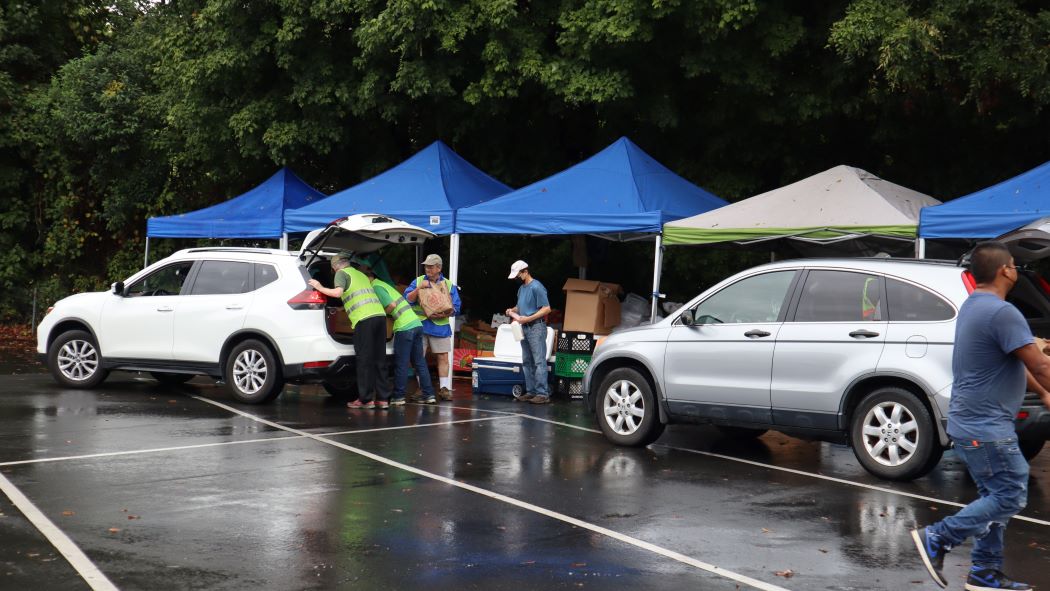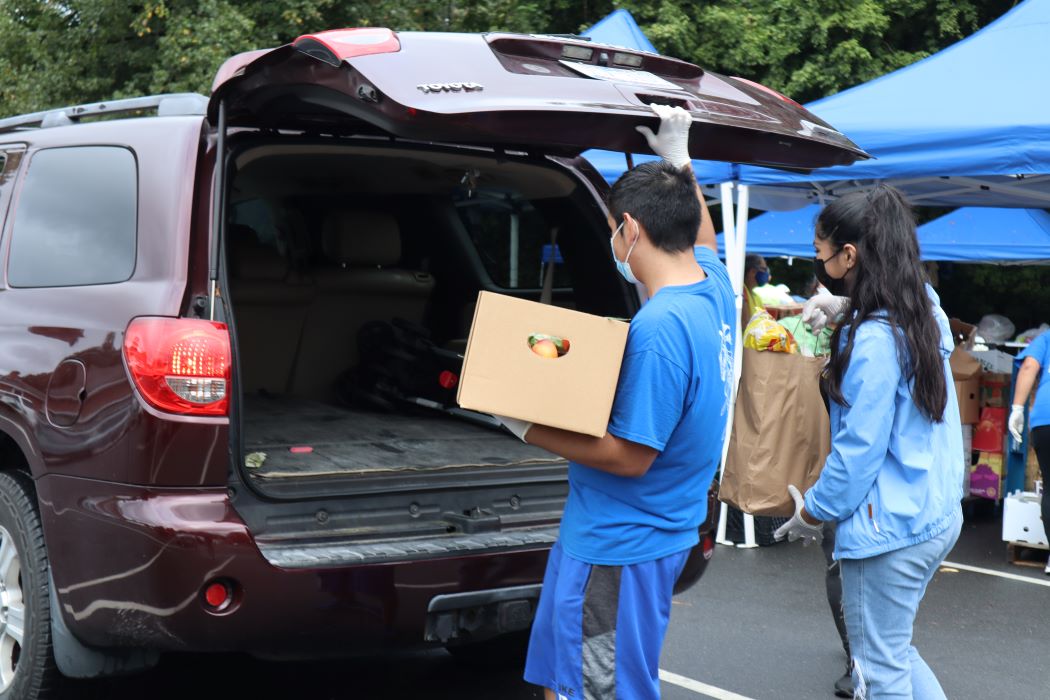As part of our mission to improve the health, well-being, and peace of mind of those we serve, Cigna has donated $15,000 to the Inter-Faith Food Shuttle (Food Shuttle) of North Carolina to provide healthy meals to people in need in Wake County.

Regular access to nutritious, sufficient and affordable food is key to living a healthier, more productive life.
According to the U.S. Department of Agriculture, a whopping 38.3 million people lived in a food insecure household in 2020. Lack of quality nutrition can lead to physical and mental health issues, emotional and behavioral problems, obesity, and preventable chronic conditions such as diabetes, high blood pressure and heart disease.
As part of our mission to improve the health, well-being, and peace of mind of those we serve, Cigna has donated $15,000 to the Inter-Faith Food Shuttle (Food Shuttle) of North Carolina to provide healthy meals to people in need in Wake County.
 According to the Food Shuttle’s President and CEO, Ron Pringle, who has been in the food banking world for more than 20 years, the pandemic has resulted in a dramatic rise in food insecurity. In this exclusive interview, Pringle speaks to what exactly food insecurity is, the Food Shuttle’s mission to help end hunger through education, as well as some of the most common myths related to hunger. Read on to learn more about this worthy cause and how you can get involved and make a difference.
According to the Food Shuttle’s President and CEO, Ron Pringle, who has been in the food banking world for more than 20 years, the pandemic has resulted in a dramatic rise in food insecurity. In this exclusive interview, Pringle speaks to what exactly food insecurity is, the Food Shuttle’s mission to help end hunger through education, as well as some of the most common myths related to hunger. Read on to learn more about this worthy cause and how you can get involved and make a difference.
Tell us about Inter-Faith Food Shuttle. What’s the organization’s mission?
Inter-Faith Food Shuttle started in 1987 as a food rescue organization that salvaged food that would otherwise be thrown out, and got it into the mouths of people in shelters and soup kitchens. The aim was to ensure food was used, instead of it ending up in the landfills.
The program has evolved over the years to also focus on the root cause and why people were hungry in the first place. Today, we do a lot work to educate communities on eating healthier, preparing your own meals, and growing your own food. The mission of the Food Shuttle is to feed our own neighbors, teach self-sufficiency and grow healthy foods to cultivate innovative approaches to end hunger. All of that is in support of the vision of a hunger-free community.
How do you define food insecurity?
Being food insecure is a state of being without reliable access to a sufficient quantity of affordable, nutritious food. Some individuals, for example, who reside in what we call a “food desert” (mostly rural locations where there aren’t any grocery retailers nearby) are considered food insecure because distance makes it hard for them to access fresh produce or nutritious products. Food insecure individuals might also be unemployed, or those that are under-employed and cannot afford to maintain a consistent, healthy diet. They come from all walks of life.
What’s the No. 1 reason why people are food insecure?
There are a plethora of different reasons why people are food insecure. And the solutions to get them out of food insecurity are also varied. We have learned that every community is different and has their own barriers to accessing food. That’s why we work hand in hand with people who have experienced food insecurity in these communities, and they are key to helping us identify solutions. Our role is to be a resource to them through our various programs and through the collaborative efforts and partnerships with other nonprofits and organizations.
Give me the lay of the land in terms of where we are with food insecurity right now. How has the pandemic played a role?
The pandemic was a setback. It resulted in more individuals that need help with food security, with some people needing the help of food banks for the very first time. The employment markets are changing, the way we access food is changing, and the lead time for getting food (due to barriers in transportation) is longer, and these are just some of the challenges we are facing as a food bank.
What’s the biggest myth or misunderstanding related to food insecurity?
Convincing people that hunger is a real issue. Also, I think that some people have this perception of what hunger looks like and they think that it is something that is only prevalent in the homeless community, when that is actually not the case. Think of the single mom that’s making just enough to be over the threshold for food stamps. She is doing her best to make ends meet, but needs to spend half of her month’s pay to fix her car that’s broken down. She’s living paycheck to paycheck and when this uninvited cost comes around, something’s got to be sacrificed, and many times its food. Another example is seniors who must travel far to get from their rural community to a place in the city to get the food they need. Food insecurity happens for a variety of reasons.
What’s it going to take to make an impact and solve for hunger?
Educating the community on what the barriers to food are, because it really takes a community effort to reach a solution. It also takes the people who are in the community to continue to help make the solution sustainable. It takes donors like Cigna who invest in these types of opportunities for these communities. And, it takes our elected officials to look at policy and advocate on behalf of seniors as well as children and youth programs to make food more accessible.
Let’s talk about Cigna's donation. How will that funding be used?
The funding is going to go a long way to serve Wake County and beyond in North Carolina, which has rural communities that face food security barriers. The pandemic has hit them very hard and Cigna is allowing us to extend our mobile food services into these areas to help the people who live there. We’ll bring them culturally diverse food, which the community will actually utilize. This allows us to reduce waste and to have a greater impact by contributing to the community’s healthier lifestyle. We also want to educate the community through cooking classes, recipes, and more, which will allow us to drive long-term impact by helping to break cycles.

Image: Food Shuttle volunteers distribute food via a drive-through to people who need it most.
How can others get involved?
Time, talent or treasure. Time to not just volunteer, but educate yourself to understand what food insecurity is and what it really looks like. People who are food insecure look just like you and I. They put their best on, they go to work, and they do the best that they can. Many times, without access to a food pantry, these families would not be able to make ends meet.
With talent, there are some really talented people out there who have important and useful skills. For example, people who have a green thumb. We have a 14-acre farm and we’re looking for volunteers to help us in the planting and harvesting season. In our community gardens, located in some of the most in-need neighborhoods, we need volunteers to help sustain those gardens so that the people who live there can have access to it.
And if you can’t lend your time or talents, a monetary contribution goes a long way.

Hunger is Unacceptable
You can help a neighbor in need by lending your time, talent or by donating to the cause.